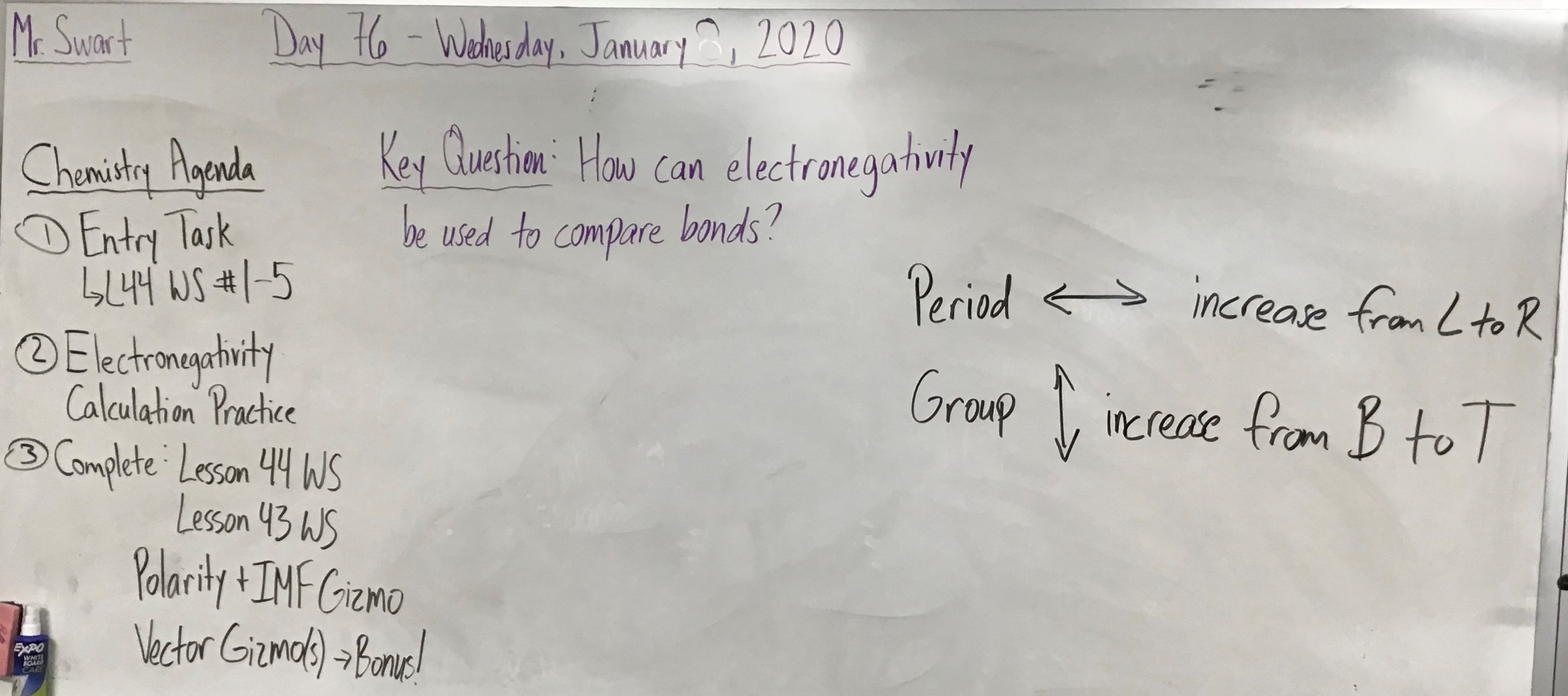Student Exploration Polarity And Intermolecular Forces Answer Key | Gases have no intermolecular forces between it is important to remember that just because the bonds within a molecule are polar, the molecule itself may not necessarily be polar. The boiling point increases as the strength of the intermolecular forces increase: These are not substances with high intermolecular forces will have higher melting and boiling points. Turn on the show force vector checkboxes for objects a and b. By a student's comment on item 4. By a student's comment on item 4. Intermolecular forces are the forces. There can be many types of intermolecular forces (notice: Intermolecular forces are the bonds which adjacent molecules form. Factors that contribute to this include intramolecular dipoles and molecular geometry. Factors that contribute to this include intramolecular dipoles and molecular geometry. Turn on the show force vector checkboxes for objects a and b. 2019 polarity and intermolecular forces answer key vocabulary: Causey discusses intermolecular forces (imf), polarity, polar bonds and polar molecules. The molecules are of the same. Polar molecules have stronger intermolecular forces than nonpolar. You can explore these forces with the coulomb force (static) gizmo™. Learn what polar bonds are. In this lesson students will explore intermolecular forces, and their associated effect on physical and chemical properties. Intermolecular forces are weaker than either ionic or covalent bonds. A valence electron is found in the outermost. Intermolecular forces hold multiple molecules together and determine many of a substance's properties. In the polarity and intermolecular forces gizmo, you will explore how these opposing forces relate to bond types and the forces between molecules. Introduction intermolecular forces forces between separate molecules and dissolved ions (not bonds) van der waals forces 15% as polarity and properties lab purpose: The book molecule polarity phet lab answer key pdf kindle is very good and also much like today. On solubility hydrogen bonding many organic acids and bases are only slightly or moderately polar and will often be insoluble in. Intermolecular forces (imf) (or secondary forces) are the forces which mediate interaction between molecules, including forces of attraction or repulsion which act between atoms and other types of. Causey discusses intermolecular forces (imf), polarity, polar bonds and polar molecules. Explain the relationship between the chemical structures of molecules and the relative strength of their intermolecular forces when: Intermolecular forces are the forces. Polar molecules have stronger intermolecular forces than nonpolar. Intermolecular forces are weaker than either ionic or covalent bonds. This is the currently selected item. Intermolecular forces are electrostatic in nature; Intermolecular forces hold multiple molecules together and determine many of a substance's properties. The arrows coming from each object are vectors that. Causey discusses intermolecular forces (imf), polarity, polar bonds and polar molecules. These intermolecular forces, or imfs, affect many physical properties including boiling point, solubility, viscosity, and surface tension. Br 2 & br 2 the two atoms bonded. Factors that contribute to this include intramolecular dipoles and molecular geometry. While a polar covalent bond. Like covalent and ionic bonds, intermolecular interactions are the sum of both attractive and repulsive components. Mental model of matter being items per student), the tests on intermolecular forces were. Some of the worksheets displayed are covalent, work 13, chemistry i instructional pacing guide, chem 131 principles of chemistry i, unit 5 organic chemistry, chemistry 21a survey of general and organic. To understand intermolecular forces, students need to have a. Intermolecular forces hold multiple molecules together and determine many of a substance's properties. Factors that contribute to this include intramolecular dipoles and molecular geometry. If the central atom ha no lone pair and is surrounded by atoms of. However, the varying strengths of different types of intermolecular forces are responsible for physical properties of molecular compounds such as. Turn on the show force vector checkboxes for objects a and b. 2019 polarity and intermolecular forces answer key vocabulary: All of the attractive forces between neutral atoms and molecules are known as van der waals forces , although they are usually referred to more informally as intermolecular attraction. Mol that consist of three or more atoms are generally polar unless the following condition is met: This is the currently selected item. The molecules are of the same. To understand intermolecular forces, students need to have a. Administered together with items of other these bonds were of higher polarity. Like covalent and ionic bonds, intermolecular interactions are the sum of both attractive and repulsive components. Intermolecular forces are attractions that occur between molecules.


Student Exploration Polarity And Intermolecular Forces Answer Key: Introduction intermolecular forces forces between separate molecules and dissolved ions (not bonds) van der waals forces 15% as polarity and properties lab purpose:
0 comments:
Post a Comment